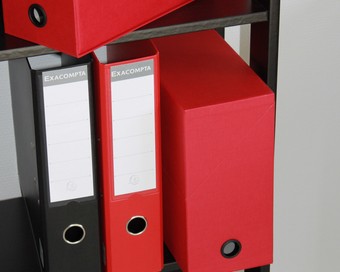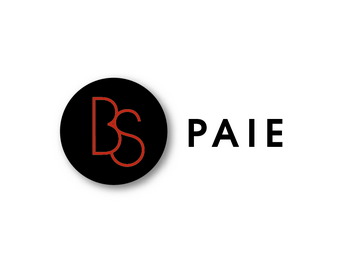mar 10 2025
Current liability definition
Staying on top of your company’s current liabilities can be an important step in ensuring its short- and long-term success. Commercial paper is usually issued at a discount from face value and reflects prevailing market interest rates, and is useful because these liabilities do not need to be registered with the SEC. Another common type of short-term debt is a company’s accounts payable. This liabilities account is used to track all outstanding payments due to outside vendors and stakeholders. If a company purchases a piece of machinery for $10,000 on short-term credit, to be paid within 30 days, the $10,000 is categorized among accounts payable. The first, and often the most common, type of short-term debt is a company’s short-term bank loans.
And yes, they will want proof—income, expenses, and possibly bank records. This is called consolidation, and it simply means rolling all your unpaid balances into one monthly payment. If you ignore your new debt, the IRS might view it as a breach of your original agreement, and they could cancel it. That opens the door for wage garnishments and other collection actions.
Types of current liabilities
- Creditors and investors will also use the figure to determine the financial state of your business if you apply for financing.
- Lower turnover might indicate cash flow issues—or, alternatively, strong negotiation terms.
- Now coming to what is an asset and a liability to rightly determine where account payable falls.
- Companies typically will use their short-term assets or current assets (such as cash) to pay them.
- It can simply be moved to the current liability account from the long-term liability account on the balance sheet.
- In the example below, we will demonstrate calculating current liabilities for common items found on a balance sheet.
Accrued expenses are listed in the current liabilities section of the balance sheet because they represent short-term financial obligations. Companies typically will use their short-term assets or current assets (such as cash) to pay them. Since AP represents the amount a company owes to suppliers, it is classified as a current liability on the balance sheet.
Is Accounts Payable Considered an Asset or Liability?
We’ll also explore how advanced accounts payable software can streamline processes, ensuring accurate recording and improving your company’s financial management. It’s most likely that the quick ratio will be lower than the current ratio and is thus a more conservative measurement. It’s favored by businesses that have long sales effective interest method of amortization excel cycles for inventory or a long time to collect payment on their accounts receivable. The quick ratio is very similar to the current ratio except it looks at only the most liquid of assets that can be immediately turned into cash. This means the quick ratio does not include some current assets like inventory or prepaid expenses, both of which cannot be easily turned into cash at a moment’s notice. Current liabilities are what the business owes that are due to be paid back within a year.
Advance Your Accounting and Bookkeeping Career
Several liquidity ratios use current liabilities to determine a company’s ability to pay its financial obligations as they come due. Salaries and taxes payable are payroll journal entries that record the amount due to various parties as of the end of the accounting period. When a company closes its books for the month, it will accrue the amount due to its employees and the government for salaries and taxes. The entry would include a debit to the salaries and tax expense accounts and a credit to the salaries and tax payable accounts.
Company
- Since they accumulate invisibly until paid, they can catch businesses off guard if not tracked properly.
- In that case, it may face financial difficulties, which can harm its reputation and ability to secure financing in the future.
- For the past 52 years, Harold Averkamp (CPA, MBA) hasworked as an accounting supervisor, manager, consultant, university instructor, and innovator in teaching accounting online.
- We note from above that Colgate’s accrued income tax was $441 million and $277 million, respectively.
- On the other hand, if the contract is expected to be fulfilled over a period of more than one year, the contract liability would be classified as a non-current liability.
- Both the current and quick ratios help with the analysis of a company’s financial solvency and management of its current liabilities.
- Most taxpayers need to consolidate all outstanding balances into a single updated agreement.
These businesses will typically issue an invoice to your company, which must then be paid within 30 to 60 days. Most Balance sheets separate current liabilities from long-term liabilities. Being part of the working capital is also significant for calculating free cash flow of a firm. Current Liabilities on the balance sheet refer to the debts or obligations that a company owes and is required to settle within one fiscal year or its normal operating cycle, whichever is longer. These liabilities are recorded on the Balance Sheet in the order of the shortest term how to deduct personal appearance expenses to the longest term. As current liabilities gives us a general overview of your business’s short-term financial standing and is good when planning for working capital expenditures.
What is current ratio?
Consider a business that has $10,000 in accounts receivable and $10,000 in accounts payable. The current ratio is one of many liquidity ratios that businesses use to understand their financial health at a glance. Here’s how the current ratio compare to the other three liquidity ratios. Current liabilities make up part of your company’s balance sheet and are also referred to as “short-term liabilities”, as they cover any debt which should be repaid within 12 months. Well-managed companies attempt to keep accounts payable high enough to cover all existing inventory.
These types of loans arise on a business’s balance sheet when the company needs quick financing in order to fund working capital needs. It’s also known as a « bank plug, » because a short-term loan is often used to fill a gap between longer financing options. Unearned revenue is money received or paid to a company for a product or service that has yet to be delivered or provided. Unearned revenue is listed as a current liability because it’s a type of debt owed to the customer.
Accounts payable, or « A/P, » are often some of the largest current liabilities that companies face. Businesses are always ordering new products or paying vendors for services or merchandise. Learn more about how current liabilities work, different types, and how they can help you understand a company’s financial strength. Lauren McKinley is a financial professional with five years of experience in credit analysis, commercial loan administration, and banking operations. She has worked at regional lending institutions across the Northeast, evaluating risk, analyzing financials, and managing loan processes.
Walmart will have to find other sources of funding to pay its debt obligations as they come due. The types of current liability accounts used by a business will vary by industry, applicable regulations, and government requirements, so the preceding list is not all-inclusive. However, the list does include the current liabilities that will appear in most balance sheets. The initial entry to record a current liability is a credit to the most applicable current liability account and a debit to an expense or asset account.
Here is why AI is the Game-Changer in AP Automation
A current ratio above 1 indicates that a company has the ability to meet its current obligations rather than relying on future profits to cover them. While capital is not considered a liability, it does have an impact on a company’s financial health and ability to meet its obligations. By investing capital into the company, owners are providing the company with the resources it needs to operate and grow, which can help ensure its long-term success. At month or year end, a company will account for the current portion of long-term debt by separating out the upcoming 12 months of principal due on the long-term debt. The reclassification of the current portion of long-term debt does not need to be made as a journal entry. It can simply be moved to the current liability account from the long-term liability account on the balance sheet.
In conclusion, current liabilities are a crucial aspect of financial accounting and management, representing the short-term obligations a company must settle within a year. Understanding the types of current liabilities and how to calculate them is essential for assessing a company’s liquidity and financial health. Managing these liabilities effectively ensures that businesses can avoid potential cash flow problems and continue operating smoothly. The current ratio is a measure of liquidity that compares all of a company’s current assets to its current liabilities. If the ratio of current assets over current liabilities is greater than 1.0, it indicates that the company has enough available to cover its short-term debts and obligations.
Accounts payable are the opposite of accounts receivable, which is the money owed to a company. This increases when a company receives a product or service before it pays for it. who files schedule c: profit or loss from It’s important for a company to carefully manage its current liabilities because they can significantly impact the company’s financial health. If a company cannot pay its current liabilities, it may face financial difficulties, which can harm its reputation and ability to secure financing in the future.
Accrued expenses (otherwise known as accrued liabilities) are expenses that your business has incurred but not yet paid. Some common examples can include payroll expenses and wages for employees, utility bills, rent payments, and customer warranty repairs. In the retail industry, the current ratio is usually less than 1, meaning that current liabilities on the balance sheet are more than current assets. Current liabilities are an enterprise’s obligations or debts that are due within a year or within the normal functioning cycle. Moreover, current liabilities are settled by the use of a current asset, either by creating a new current liability or cash.

































